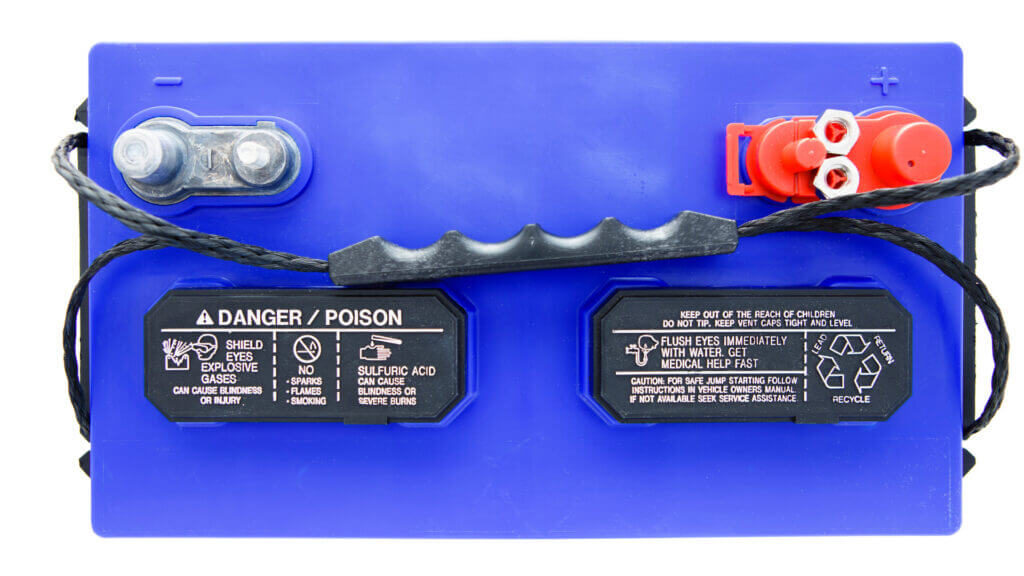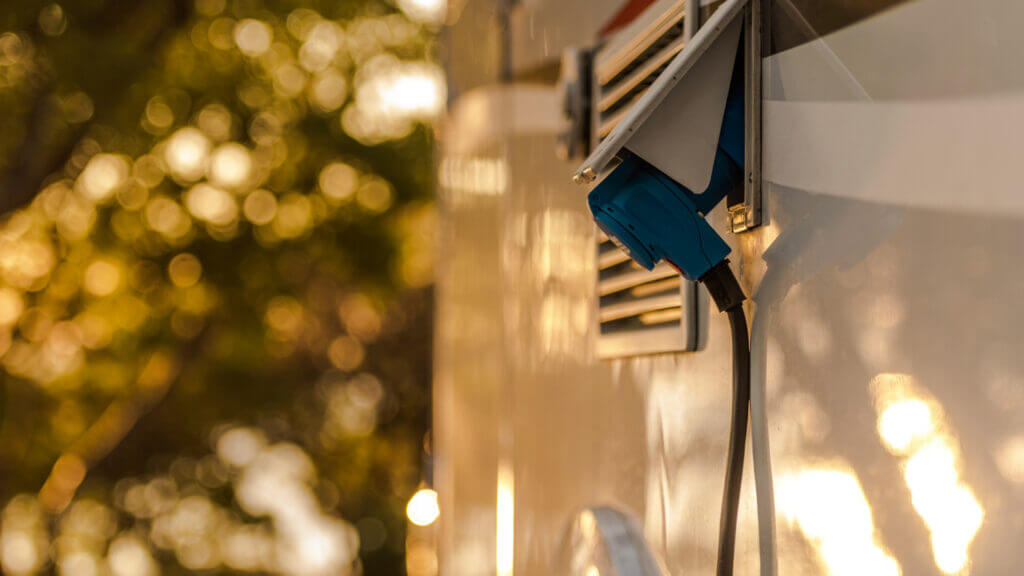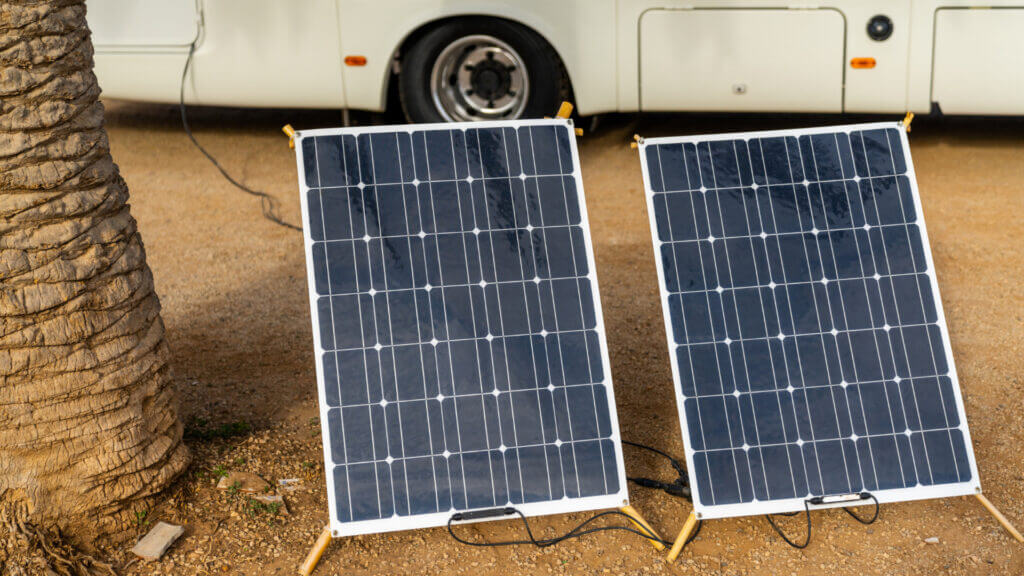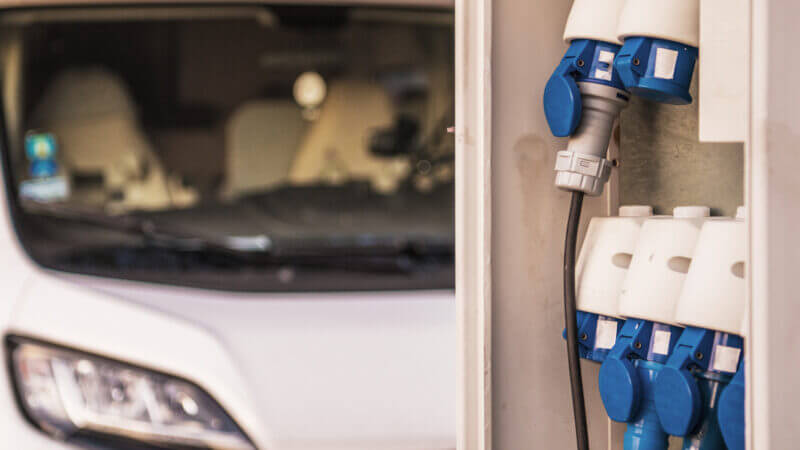Table of Contents Show
While you may take it for granted at home, your RV electrical system requires a bit more knowledge and care to operate correctly. For those without any electrical background, it can feel a bit daunting at first. Follow along as we break down everything you need to know about how your rig’s power system works and what you need to do to keep the lights on.
What Kind of Electrical Systems Are in Your RV?
When we talk about your RV electrical system, we’re referring to three distinct systems that work together to provide power for your rig.
Which one you use depends on a few things, including whether you’re using electrical hookups and appliances.
DC Power
DC or direct current power is most similar to the juice you’d get from a traditional car battery. From a technical perspective, with DC power, current flows in only one direction from positive to negative.
Your RV probably has high-quality deep-cycle batteries. These batteries will charge when you have your RV plugged into hookups or another external power source.
AC Power
AC (short for alternating current) is the type of power you use in most traditional homes. It differs from DC in that the current alternates direction periodically in a sine wave.
To use AC power, you’ll need to plug into an external source, like shore power. Your AC power system will run appliances that require an extra boost, like your air conditioner, microwave, residential refrigerators, and traditional power outlets.
Chassis Power
Chassis power is a vital system, but the one you’ll need least while camping. However, it’s crucial for getting to wherever you’ll be staying. It is only on driveable RVs.
Chassis power will start your motorhome’s engine and power the systems required to run and drive your RV. This power system is the same as that of a regular car.
While important, it’s generally the most hands-off power supply in your rig, with the most limited uses as well.

How an RV Battery Works
When someone refers to batteries within your RV electrical system, they probably mean the “house” batteries. These supply power to your DC power system. In contrast, the “coach” batteries provide your chassis power.
Your batteries will charge anytime you have your rig plugged into AC power or any other power source. These can include your generator, wind turbines, or solar power for those who like to go off-grid.
You’ll use your batteries to run things like your lights, water pump, fans, and other lower-power items.
Why Amperage Matters
When explaining electricity, a common analogy is to compare it to water flowing through a pipe.
Voltage is like the water pressure, while watts would describe the rate at which the water flows.
Amperage would refer to the overall volume of water flowing through the pipe at a given time.
Your voltage is constant. However, you can control the watts you use and the overall amperage capacity of your rig.
20 Versus 30 Versus 50
Depending on your rig, you’ll most likely have either a 30-amp or 50-amp electrical system. Most larger RVs will be equipped with 50-amp service, while smaller ones are more likely to be 30-amp.
You may find you need to keep an eye on your power usage if you only have access to 30 amps. A 50-amp system will remove some of that worry and function more like a traditional home electric system.
Both systems have different style plugs to help visually differentiate them.
Some campgrounds may only have 30-amp hookups which will require a dogbone if you have a 50-amp RV. You may even need to use a traditional home electrical system 20-amp outlet in rare situations, like when you’re moochdocking at a friend or family member’s home. Regardless of your rig’s electrical system, you can access all of these outlets using the correct adapter.
Still, it’s crucial to keep in mind how much power you’re using. Drawing more power than your source is equipped for can blow fuses, damage your RV electrical system, or even damage the power source.
You can ballpark how many amps you’re using by dividing the watts used by a given item by the overall voltage. However, you’ll need to leave some breathing room as your system shouldn’t routinely operate at more than 80% capacity.

What Is the Difference Between an RV Converter and Inverter
If RV converters and inverters sound similar, it’s because they are. They provide essentially the same service in opposite directions.
Both play important roles in your RV electrical system. A converter turns AC power into DC, while an inverter takes DC power and turns it into AC.
Converters will charge your RV’s house batteries when you plug into an external power source. Inverters allow you to use this stored DC power to run AC-only appliances like your air conditioner, TV, and regular outlets.
How Is the RV Battery Charged?
The most common way to charge your RV batteries is by plugging into a campground or home electrical system. Your RV electrical system will pass this shore power to your converter, which charges your batteries.
If shore power isn’t available, you can also charge your house batteries using a generator. Many RVs have one built-in, but smaller rigs that don’t can use portable generators. Power will pass from your generator to your RV electrical system converter, then to the batteries.
Solar or wind power also offers off-grid battery charging options. These systems typically generate DC power, and they can be wired directly into your batteries. However, you’ll need an inverter if you want to power AC appliances or outlets. The amount of power generated by solar or wind can also vary greatly depending on the weather and time of year.
Depending on your type of rig, your RV chassis batteries may or may not charge while plugged into shore power. If they don’t, they’ll be charged by your alternator when you run your rig’s engine. In some cases, your RV engine alternator will also charge your house batteries.

Now You Should Know How RV Electrical Systems Work
Electric systems may seem complicated or scary at first, but understanding them is a major part of unlocking your RV’s full potential. From your power source to your batteries, each piece plays a crucial role in keeping the lights on for you. Keep this information in mind to avoid electrical issues during your future adventures. Have you ever had electrical problems while traveling?






